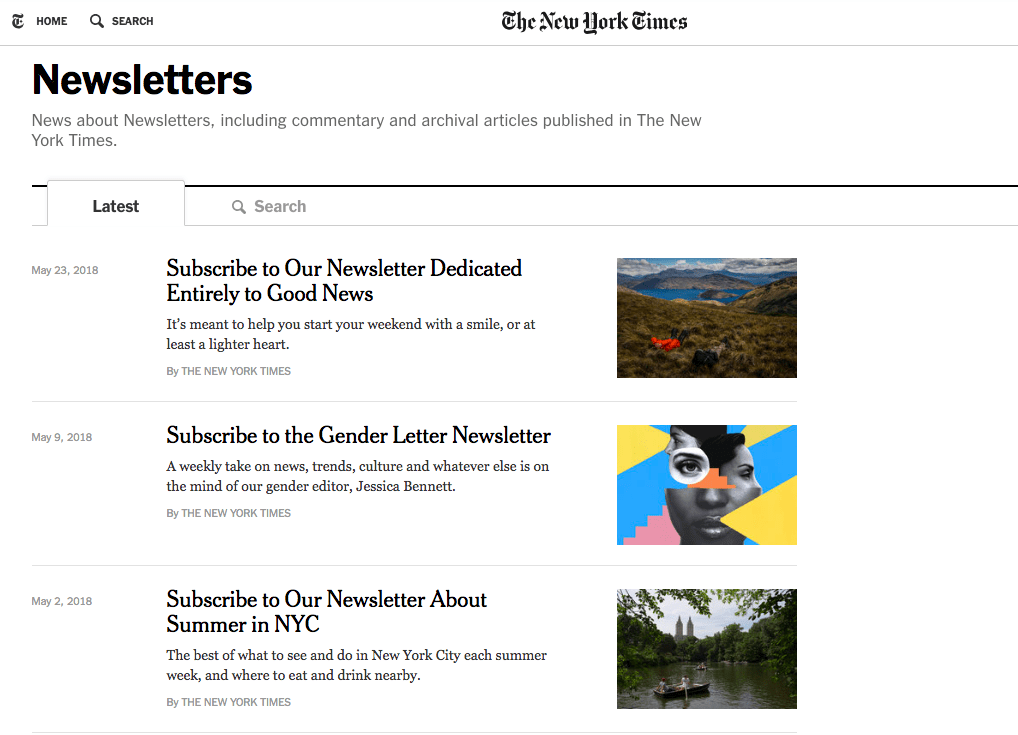|
Getting your Trinity Audio player ready...
|
Earlier this month, News UK announced a major subscription milestone with The Times and The Sunday Times reaching 500,000 subscribers at the end of June 2018.
Digital subscribers overtook print subscribers for the first time, with digital-only subscriptions up 20% YoY to 255,000, in the most successful year since the digital subscription model was launched in 2010.
On the other side of the Atlantic, the New York Times made more than $1 billion in overall subscription revenue last year, with a total of more than 2.6 million digital-only subscriptions. At a time when a lot of media companies are struggling, the NY Times actually saw its circulation surge.
The company added 139,000 digital-only subscribers in the first quarter of 2018, a 25.5% increase from the same period a year ago, helping to fuel total revenue growth.
Subscription revenue now accounts for 60% of the company’s total revenue. In fact, the NYT digital paywall business is growing as fast as Facebook, and faster than Google.
Lessons for publishers
What’s behind this unprecedented growth on both sides of the pond, and what lessons can publishers learn?
The Times and The Sunday Times
The Times (UK) has grown its registered-content subscribers—where readers share their email address to access a limited number of articles every week—to 3.75 million since it was introduced in 2017.
The challenge is to convert this segment, keep the audience acquisition up on a consistent basis, while maintaining a low rate of churn. This is achieved by understanding how these readers react differently to subscription offers (through messaging and distribution) and offering them relevant content at the right time.
“We were confident that by getting people sampling our content we’d identify new subscribers,” said Chris Duncan, managing director of The Times and The Sunday Times. “This milestone is part of our broader growth plans, it’s only just the beginning.”
This strategy is definitely reaping dividends for the publisher. The Times’ cost for acquiring new customers is lower than it has been in five years, according to Duncan.
“We’re constantly learning what our conversion targets could be, it’s something we’re constantly looking to improve and it’s gradually ticking up,” he said.
In addition to focusing on the analytics, streamlining the user experience and the website design also helped to boost subscriber count.
“What’s worked really well for The Times in the last 12 months is that it’s taken a holistic approach,” said Greg Harwood, director at strategy and marketing consultant Simon-Kucher & Partners. “It’s improved the user experience and the aesthetics of the site, which drives conversion, and — in parallel — it’s changed the commercial strategy, the pricing and the introductory offers.”
The New York Times
One of NY Times’ growth strategies is built around their newsletters. The New York Times has 55 email newsletters, which go out to more than 14 million subscribers.
The editorial emails go out to subscribers at least weekly, along with some marketing-focused newsletters, which are released less frequently.
“We’re in a very busy news period, and the amount of journalism that we produce every day can be pretty daunting, even for someone who gets paid to synthesize it,” said Chris Stanford, a “news concierge” who sends the U.S. Morning Briefing, one of The New York Times’s most popular newsletters, to 1.6 million subscribers.
“I think readers appreciate having someone else do a lot of the work in sorting out what’s important and highlighting what in The Times they should spend their (limited) time on.”

According to the New York Times, this range of newsletters “strike topics including the day’s biggest news, commentary on social issues, cooking and much more. Newsletters can be a way to streamline news coverage and separate what’s consequential from what’s trending.”
A reader’s inbox is valuable real estate, said Elisabeth Goodridge, editorial director of newsletters at The Times. It’s a place where The Times can have a one-to-one relationship with the readers, “and we respect that.”
The “secret sauce” to good newsletters, she says, is this: Know your audience, have an expert write it, design it beautifully, maintain it with best practices in mind, and, perhaps most important, “offer something valuable that you can’t get anywhere else.”
Most important, offer something valuable that you can’t get anywhere else.
That in essence, sums up the core of the strategies both the “Times” across the pond are executing, be it through content sampling or email newsletters.
As their growth stories prove, there is no alternative to providing valuable content.
After all is said and done, it’s back to the basics. It’s only on strong foundations that a publisher can build a story of growth.


